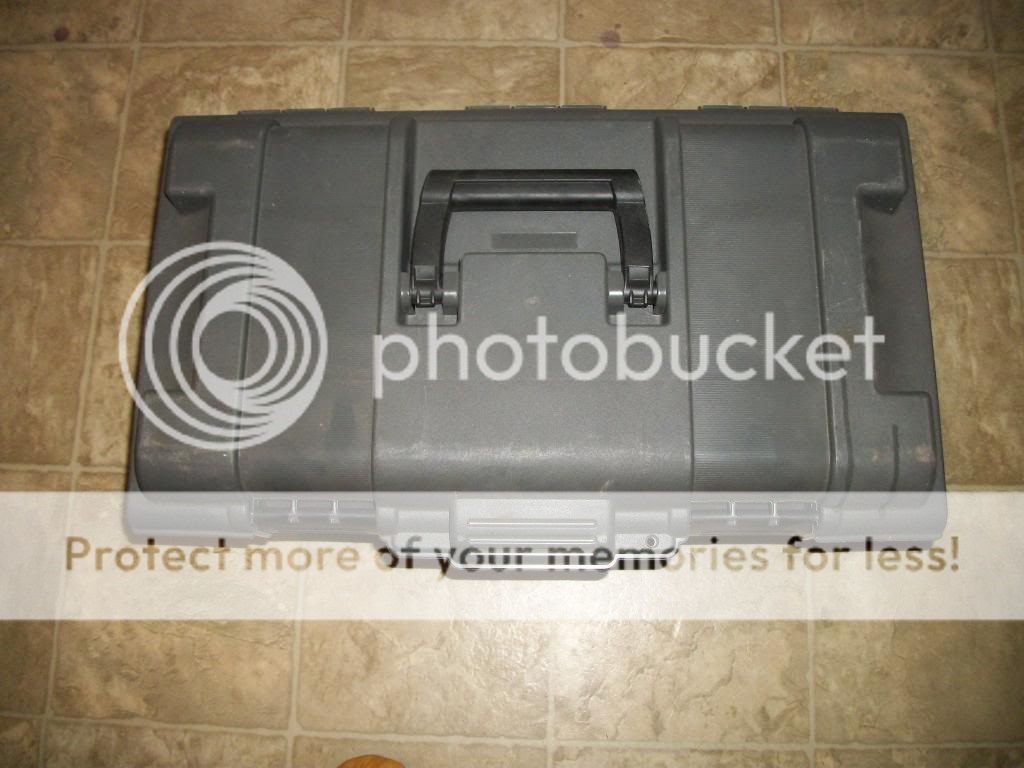Re: 1971 17' Invader Tri-Hull Restoration, The Madness Begins
When I got everything out of the way on the transom I had to deal with what was left of the wood. I didn't want to take any chances on cracking the fiberglass hull behind the plywood. I thought there had to be part of it still bonded together even though it looks pretty bad.

You can see where water intrusion was happening around the transom plate. I know from the condition of the wood and glass it had been happening for quite some time and the bilge pump was expelling the water as fast as it could and there hadn’t been any close examination of the engine compartment.

You can see moisture had spread up to the top of the transom a some point and had started delamination of the plys of wood layers which make up the sheets.
I have 2 circular saws I used for this operation, one a regular 7-1/4" circular saw while the second was a 7-1/2" worm drive. I used both because on blade is away from my right hand and the other is in front of my right hand. Since I was making kerf cuts in one direction, this would allow me some extra room when it cam to obstructions and I could cut closer to an object.
I took both saws one at a time and lay them on top of the transom with the base pulled tight against the inside plywood surface. I opened the guard up to expose the blade (do have the saw unplugged if you should ever do this) and set the depth of each saw to come within an 1/8" of the fiberglass hull. If you have never made cuts like this or there is damage that would allow the saw to cut deeper in one spot you cans set this to a shallower depth of say 1/4".
I plugged the saws back in and ran them one at a time from the top of the transom to the bottom spacing my cuts about 10-12" apart. I wasn't able to cut all the way to the bottom so I ran the saws vertically along the bottom of the transom also.
Now I could take and carefully pry out the cut sections of plywood minimizing the stress to the hull stern. The transom was made up of a 3/4" plywood layer, a 1/4" plywood layer, and another 3/4" plywood layer. From what I seen, it didn't appear to be anything other than just normal plywood.
So I didn't take any photos during this cutting and prying process, but I think you all get the drift.
I found there to be only 2 places where the resin at the hull was really attached, one on either side of the transom plate towards the top.

After sanding the stern it looked a lot better.

But here is another thing that I discovered. I don't know what they were thinking when they did this. They shot he glass and laid up the transom of course. When it cam out of the mold and added the bilge resin which looks like it is solid resin with little if any cloth in it. IT dose appear to have microspheres and definitely chopped fiber mixed in it, but if left a void when I pulled out the transom.

You can see what I mean in the photo above. It is the 1-3/4" gap between the stern and the bilge floor.
I think that moisture was getting to the bottom once it intruded the hull and through breaches in the glass integrity, was wicking up the plywood. Only a guess, but none of this damage had happened overnight. It took years and years to do its work and since it was hidden, by the time it was noticed. it was already too late.
The transom is 27" from top to bottom and I intend to rip a 4x8 3/4" plywood in half lengthwise and use that for the transom along with the 1/4" to make up the bulk of the 2" needed at the transom. I hadn't really wanted to buy 2 sheets of it anyway just to get the 27" needed.
What I intend to do is build up this gap in layers using resin, microspheres or fumed silica for a thickener, and 1/4"CS fibers for strength. I want to peanut-butter it in layers as I don't want the thermochemical reaction of the resin and the catalyst to affect the hull in any way. After filling this it will be at an elevation slightly above the bilge thimble and the plywood should be in the dry most of the time, thus getting it out of any potential water.
My only issue is I will have to lay on my fat belly as I run my die grinder and sanding cones in the trench to prep it for the glass.
Some one speak up if you think this is overkill, but I can't imagine going back the way it was.
































































